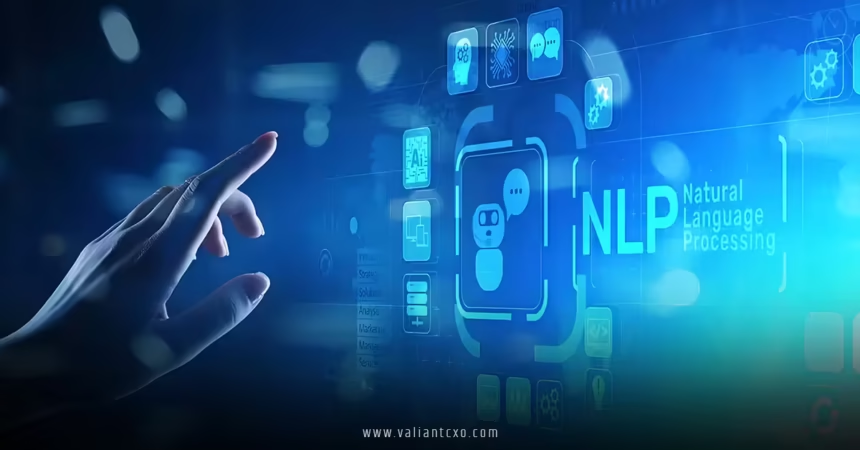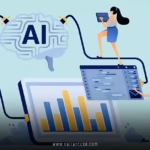Natural Language Processing (NLP) trends are revolutionizing how we interact with technology, making it feel less like a machine and more like a friend who just gets you. From chatbots that sound human to AI that can write poetry, NLP is the magic behind machines understanding and generating human language. But what’s driving this tech forward in 2025? Let’s dive into the latest Natural Language Processing (NLP) trends that are reshaping industries, enhancing user experiences, and pushing the boundaries of what’s possible.
What Are Natural Language Processing (NLP) Trends?
Before we get into the juicy details, let’s break it down: what exactly are Natural Language Processing (NLP) trends? At its core, NLP is a branch of artificial intelligence that focuses on enabling computers to understand, interpret, and respond to human language in a way that’s meaningful. Think of it like teaching a toddler to talk—except this toddler is a super-smart algorithm that learns at lightning speed. Natural Language Processing (NLP) trends refer to the innovations, techniques, and applications propelling this field into new territories, from advanced language models to real-time translation tools.
Why should you care? Because these trends are changing how we work, communicate, and even think about technology. Whether you’re a business owner, a developer, or just someone who loves a good chat with their virtual assistant, understanding these trends can help you stay ahead of the curve.
The Evolution of NLP: From Rule-Based Systems to AI-Powered Models
To appreciate the current Natural Language Processing (NLP) trends, let’s take a quick trip down memory lane. Early NLP systems were like rigid rulebooks—clunky, limited, and only as good as the predefined patterns they followed. Imagine trying to teach a robot to understand sarcasm using a manual. Good luck, right?
Fast forward to today, and machine learning, particularly deep learning, has transformed NLP into a powerhouse. Modern language models like BERT, GPT, and their successors use neural networks to process massive datasets, learning the nuances of language in ways that feel almost human. These advancements are the backbone of today’s Natural Language Processing (NLP) trends, enabling applications that were once science fiction.
The Role of Large Language Models (LLMs)
One of the biggest drivers of Natural Language Processing (NLP) trends is the rise of large language models (LLMs). These models, trained on billions of words from books, websites, and social media, can generate text, answer questions, and even hold conversations that rival human intelligence. It’s like having a super-smart librarian who not only knows every book in the library but can also write new ones on the fly.
In 2025, LLMs are becoming more efficient and accessible. Companies are optimizing these models to run on smaller devices, making NLP-powered tools available to everyone, not just tech giants. For example, Google’s AI research continues to push the boundaries of efficient NLP models, enabling faster and more accurate language processing.
Key Natural Language Processing (NLP) Trends in 2025
So, what’s hot in the world of NLP right now? Here are the top Natural Language Processing (NLP) trends that are making waves in 2025, each with its own unique impact on how we interact with technology.
1. Multimodal NLP: Beyond Text to Images and Voice
Text is just the beginning. One of the most exciting Natural Language Processing (NLP) trends is multimodal NLP, which combines text, images, and even voice to create richer interactions. Imagine asking your AI assistant, “What’s this dish?” while showing it a picture of your dinner. Multimodal NLP can analyze the image, cross-reference it with text-based recipes, and respond with a detailed description or even suggest a wine pairing.
This trend is powered by advancements in models that integrate vision and language processing, like those being explored by OpenAI. It’s not just about understanding words anymore—it’s about context, visuals, and tone, making AI interactions feel more natural and intuitive.
2. Conversational AI: Human-Like Chatbots
Ever chatted with a bot and forgotten it wasn’t human? That’s the magic of conversational AI, one of the leading Natural Language Processing (NLP) trends. In 2025, chatbots are smarter than ever, thanks to improvements in contextual understanding and emotional intelligence. These bots can detect your mood, adapt their tone, and even throw in a bit of humor to keep the conversation engaging.
Businesses are leveraging conversational AI to enhance customer service, streamline e-commerce, and even provide mental health support. For instance, a chatbot might guide you through troubleshooting a tech issue or offer empathetic responses during a tough day. This trend is all about making technology feel like a trusted companion.
3. Real-Time Language Translation
Language barriers? Not anymore. Real-time language translation is one of the most transformative Natural Language Processing (NLP) trends, enabling seamless communication across the globe. Whether it’s translating a live video call or instantly converting a website into your native language, NLP is breaking down linguistic walls faster than ever.
Tools like DeepL are setting the standard for accuracy and speed in translation. In 2025, we’re seeing NLP systems that not only translate words but also capture cultural nuances, idioms, and slang, making global communication feel effortless.
4. Ethical NLP and Bias Mitigation
With great power comes great responsibility. As NLP becomes more widespread, addressing bias in language models is a critical Natural Language Processing (NLP) trend. AI systems learn from human data, which can sometimes include stereotypes or prejudices. Left unchecked, these biases can lead to unfair or harmful outputs.
In 2025, researchers and companies are prioritizing ethical NLP by developing techniques to identify and reduce bias in training data. This includes creating more diverse datasets and implementing fairness algorithms to ensure NLP systems treat everyone equitably. It’s like teaching AI to be a fair and impartial judge, ensuring no one is misunderstood or misrepresented.
5. NLP in Healthcare: Revolutionizing Patient Care
Healthcare is another field where Natural Language Processing (NLP) trends are making a massive impact. From analyzing medical records to assisting in diagnostics, NLP is helping doctors and patients alike. Imagine a system that can read a patient’s medical history, summarize it in seconds, and flag potential issues for the doctor to review. That’s NLP at work.
In 2025, NLP is also powering virtual health assistants that can answer patient questions, schedule appointments, and even provide mental health support. This trend is all about making healthcare more accessible and efficient, saving time and lives in the process.
How Natural Language Processing (NLP) Trends Are Transforming Industries
The impact of Natural Language Processing (NLP) trends isn’t limited to tech geeks—it’s reshaping entire industries. Let’s explore how these trends are making waves in some key sectors.
E-Commerce: Personalized Shopping Experiences
Ever wondered how online stores seem to know exactly what you want? That’s NLP at play. In e-commerce, Natural Language Processing (NLP) trends are driving hyper-personalized shopping experiences. AI-powered recommendation systems analyze your search history, reviews, and even casual comments to suggest products that feel tailor-made for you.
For example, NLP can process customer reviews to understand sentiment, helping businesses improve products or target marketing campaigns. It’s like having a personal shopper who knows your style better than you do.
Education: Smarter Learning Tools
In education, Natural Language Processing (NLP) trends are creating smarter, more adaptive learning tools. From AI tutors that provide personalized feedback to language apps that adjust to your learning pace, NLP is making education more accessible and engaging. Students can now interact with virtual tutors that understand their questions and explain concepts in simple terms, like a patient teacher who never gets tired.
Finance: Streamlining Operations
The finance industry is also jumping on the NLP bandwagon. Natural Language Processing (NLP) trends are helping banks and financial institutions analyze contracts, detect fraud, and even predict market trends by processing news articles and social media chatter. It’s like giving financial analysts a superpower to process information at lightning speed.
Challenges and Opportunities in Natural Language Processing (NLP) Trends
No technology is without its hurdles, and NLP is no exception. While the current Natural Language Processing (NLP) trends are exciting, they come with challenges like data privacy, computational costs, and ensuring inclusivity across languages and cultures. For instance, training large language models requires massive amounts of energy, raising concerns about sustainability.
But where there are challenges, there are also opportunities. The push for greener AI is leading to more efficient models that require less power. Similarly, efforts to include underrepresented languages in NLP datasets are making technology more inclusive. It’s like building a global village where everyone’s voice is heard.
The Future of Natural Language Processing (NLP) Trends
What’s next for Natural Language Processing (NLP) trends? If 2025 is any indication, the future is bright. We can expect even more sophisticated models that understand context at a deeper level, perhaps even anticipating our needs before we voice them. Imagine an AI that knows you’re stressed just by the way you type and offers to play calming music or suggest a break.
Another exciting prospect is the integration of NLP with augmented reality (AR) and virtual reality (VR). Picture a world where you can have real-time conversations with virtual characters in a fully immersive environment. That’s the kind of future Natural Language Processing (NLP) trends are paving the way for.
Conclusion: Why Natural Language Processing (NLP) Trends Matter
Natural Language Processing (NLP) trends are more than just tech buzzwords—they’re reshaping how we connect with machines and each other. From making customer service more human to breaking down language barriers, these trends are making technology more accessible, efficient, and inclusive. By staying informed about Natural Language Processing (NLP) trends, you’re not just keeping up with tech—you’re stepping into a future where communication knows no limits. So, whether you’re a business owner, a student, or just curious, now’s the time to embrace these trends and see where they take you!
FAQs
1. What are the latest Natural Language Processing (NLP) trends in 2025?
The latest Natural Language Processing (NLP) trends include multimodal NLP, conversational AI, real-time translation, ethical NLP, and applications in healthcare. These advancements are making AI more intuitive and inclusive.
2. How do Natural Language Processing (NLP) trends impact businesses?
Natural Language Processing (NLP) trends help businesses by improving customer service through chatbots, personalizing marketing, and streamlining operations in industries like finance and e-commerce.
3. Why is ethical NLP a key trend in 2025?
Ethical NLP is a critical Natural Language Processing (NLP) trend because it focuses on reducing bias in AI models, ensuring fair and accurate outputs for diverse users, which builds trust and inclusivity.
4. Can Natural Language Processing (NLP) trends improve education?
Yes, Natural Language Processing (NLP) trends are transforming education by powering AI tutors, personalized learning tools, and language apps that adapt to individual learning styles.
5. How can I stay updated on Natural Language Processing (NLP) trends?
To stay updated on Natural Language Processing (NLP) trends, follow AI research blogs, attend tech conferences, and explore resources from trusted organizations like Google, OpenAI, and DeepL.
For More Updates !! : valiantcxo.com


